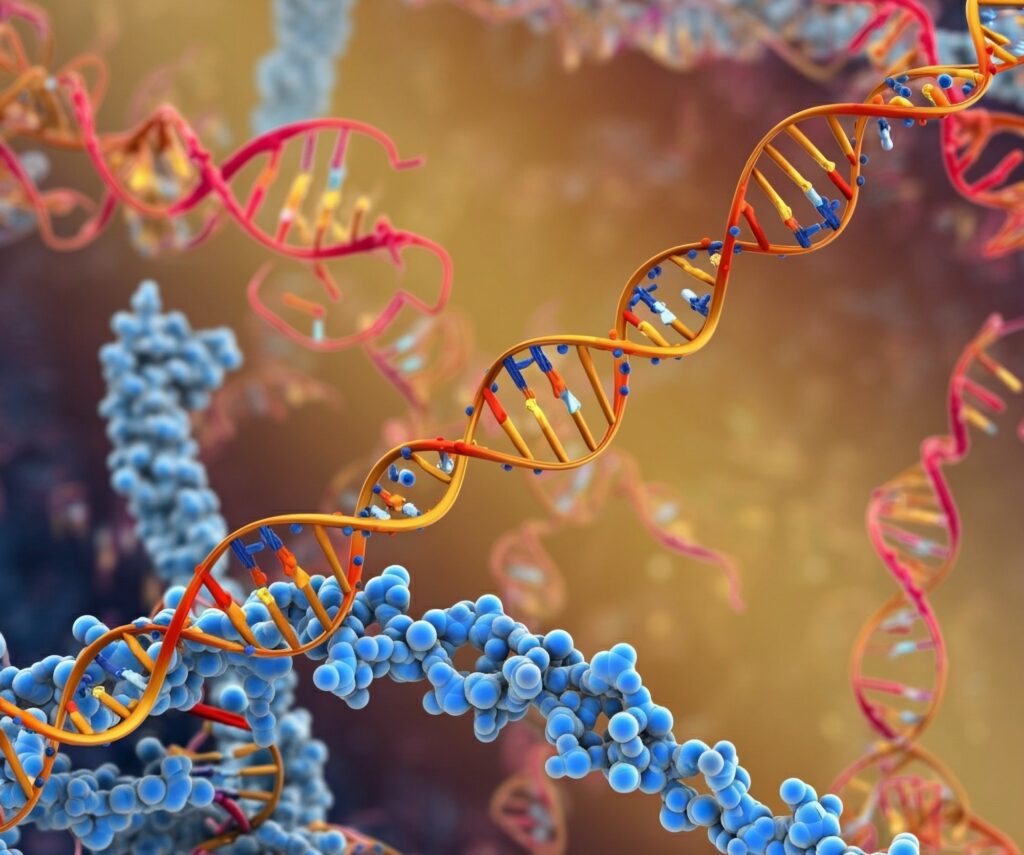Groundbreaking research uncovers the role of miRNAs in driving cancer while offering innovative diagnostic tools and therapies, including solutions to chemotherapy resistance.
Study: miRNA interplay: Mechanisms and therapeutic interventions in cancer. Image Credit: Shutterstock AI / Shutterstock.com
A recent review published in the journal MedComm Oncology describes how microRNAs (miRNAs) interact to cause cancer and their potential role in the diagnosis and treatment of this disease.
What are miRNAs?
The first miRNA was discovered in 1993 in Caenorhabditis elegans, a commonly used animal model, and has since been detected in both plants and animals.
After their synthesis as primary miRNAs, miRNAs undergo processing to become mature functional miRNAs. Functional miRNAs are found in both intron and exon noncoding RNAs (ncRNAs) and the introns of pre-RNAs.
The primary activity of miRNAs is to prevent messenger RNA (mRNA) translation by either breaking down mRNA or binding to the 3’ untranslated region (3’ UTR) of a target RNA molecule to repress the expression of protein-coding genes. In fact, miRNAs post-transcriptionally regulate over 60% of human genes coding for proteins and modulate all aspects of the cell cycle from growth to differentiation and apoptosis.
The role of miRNAs in cancer development
Dysregulation of miRNAs can lead to cancer, as these molecules regulate specific genes involved in cell proliferation, apoptosis, migration, and invasion.
Many miRNAs leave the cell through exosomes, carriers like argonaut proteins (AGOs), and multiple other routes to reach target cells and prevent mRNA repression. Moreover, miRNAs interact with each other, facilitate intercellular communication, and act on immune cells. These interactions are actively involved in the creation of the tumor microenvironment that promotes tumor development, as well as immune evasion, invasion, and metastasis.
Interactions between miRNA are currently being explored through high-throughput RNA sequencing (RNA-Seq), such as PANDORA-seq and Nanopore MinION RNA-Seq. Imaging technologies, including single-molecule imaging and cryo-electron microscopy, can also provide important insights into the dynamic interactions between miRNAs.
Advancements in miRNA detection techniques
Notable advantages of miRNAs as biomarkers include their stability, presence in body fluids, enabling liquid biopsy, and specificity. The reverse transcription-quantitative polymerase chain reaction (qRT-PCR) assay is primarily used to detect exosomal miRNA; however, RNA-Seq, microfluidics, and next-generation sequencing (NGS) can also be used for miRNA diagnostic purposes.
Bioinformatics identifies targetable miRNAs from large-scale gene expression studies. Gene editing technologies like CRISPR/Cas9 can also be used to validate and allow miRNA-responsive elements (MREs) and improve the specificity of miRNA detection for point-of-care testing (POCT).
Other amplification techniques, in addition to qRT-PCR, can increase detection sensitivity at a constant temperature. Nanoparticle-based miRNA detection is another promising area.
Bioinformatics can be coupled with computational techniques to predict how certain miRNAs will function. Combining this computational data with experimental information can improve the prediction accuracy of miRNA interactions while also revealing unknown associations between regulatory and target molecules.
miRNAs as a therapeutic tool in cancer treatment
Currently, researchers are investigating the efficacy of miRNA-nanoparticles and chimeric antigen receptor (CAR) T-cells as miRNA vehicles for targeted treatment. However, additional research is needed to determine how and why miRNAs change in different situations.
Additionally, miRNAs are involved in immunotherapy responses, as they directly act on cancer cells, regulate immune checkpoint molecules, improve the response to other immunotherapeutic agents, and optimize immunologic responses by their effects on immune cells and receptors.
The presence of miRNAs in the tumor microenvironment indicates their potential for synergistic immunotherapy, as they may improve the efficacy of these treatments while preventing immunologic rejection. Nevertheless, additional studies are needed to advance these applications for clinical use.
Newer delivery systems like nanotechnology offer novel applications, including diagnostic and therapeutic tools like biosensors and miRNA-nanoparticle drugs. Nanotechnology improves drug bioavailability, specificity, and the effectiveness of miRNAs.
Currently, several miRNA drugs are being investigated in preclinical and early clinical trials, including mimics and inhibitors.
Overcoming chemotherapy resistance with miRNAs
Acquired drug resistance can arise in previously sensitive tumor populations, which ultimately leads to failure of chemotherapy and tumor recurrence. Chemotherapy resistance has a significantly negative impact on both the prognosis and survival of cancer patients, as it accounts for over 90% of cancer patient mortality.
Chemotherapy resistance within cancer cells has been attributed to various genetic, epigenetic, transcriptomic, and proteomic processes. For example, abnormal miRNAs can exacerbate cancer progression by interfering with epigenetic methylation, transcription factor dysregulation, and altered miRNA biogenesis.
Conversely, miRNAs can be used to predict and overcome drug resistance to cancer chemotherapy. For example, the expression of miR-21 has been correlated with both the invasiveness of breast cancer and its resistance to chemotherapy.
Conclusions
A deeper understanding of miRNA mechanisms in cancer is crucial for developing novel diagnostic tools and therapeutic strategies.”
Additional research is needed to expand the applications of miRNAs in cancer diagnosis and treatment. This will likely involve improving the sensitivity and specificity of detection and the stability and specificity of therapeutic targeting. These advancements will support the inevitable adaptation of miRNAs in precision medicine strategies for cancer.
Journal reference:
- Wang, Z., Wang, H., Zhou, S., et al. (2024). miRNA interplay: Mechanisms and therapeutic interventions in cancer. MedComm Oncology. doi:10.1002/mog2.93.


